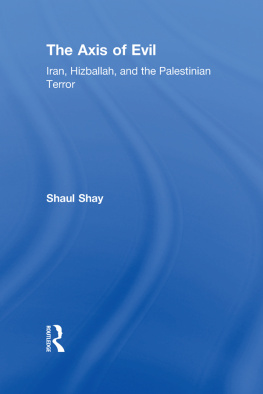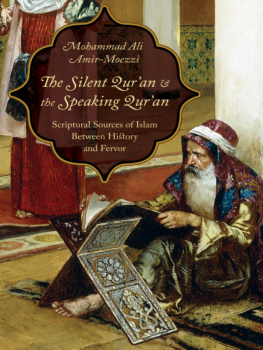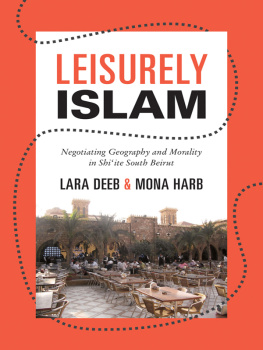SHIITE LEBANON
H ISTORY AND S OCIETY OF THE M ODERN M IDDLE E AST
H ISTORY AND S OCIETY OF THE M ODERN M IDDLE E AST
Leila Fawaz, general editor
Janet Afary
The Iranian Constitutional Revolution, 19061911: Grassroots Democracy, Social Democracy, and the Origins of Feminism
Irene L. Gendzier
Notes from the Minefield: United States Intervention in Lebanon and the Middle East, 19451958
Andrea B. Rugh
Within the Circle: Parents and Children in an Arab Village
Juan R. I. Cole
Modernity and the Millennium: The Genesis of the Bahai Faith in the Nineteenth Century
Selma Botman
Engendering Citizenship in Egypt
Elizabeth Thompson
Colonial Citizens: Republican Rights, Paternal Privilege, and Gender in French Syria and Lebanon
Thomas Philipp
Acre: The Rise and Fall of a Palestinian City, 17301831
Leila Fawaz and C. A. Bayly
Modernity and Culture: From the Mediterranean to the Indian Ocean
Samir Khalaf
Civil and Uncivil Violence in Lebanon: A History of the Internationalization of Communal Conflict
SHIITE
LEBANON
Transnational Religion and the
Making of National Identities
ROSCHANACK
SHAERY-EISENLOHR
Columbia University Press
 New York
New YorkColumbia University Press
Publishers Since 1893
New York Chichester, West Sussex
cup.columbia.edu
Copyright 2008 Columbia University Press
All rights reserved
E-ISBN 978-0-231-51313-5
Library of Congress Cataloging-in-Publication Data
Shaery-Eisenlohr, Roschanack.
Transnational religion and the making of national identities / Roschanack Shaery-Eisenlohr.
p. cm.
Includes bibliographical references and index.
ISBN 978-0-231-14426-1 (cloth : alk. paper)ISBN 978-0-231-14427-8 (pbk. : alk. paper)ISBN 978-0-231-51313-5 (e-book)
1. ShiiahLebanon. 2. ShiitesLebanonPolitical activity. 3. LebanonPolitics and government1990 4. LebanonEthnic relations. I. Title.
DS80.55.S54S43 2008
305.69782095692dc22
2007048438
A Columbia University Press E-book.
CUP would be pleased to hear about your reading experience with this e-book at .
References to Internet Web Sites (URLs) were accurate at the time of writing. Neither the author nor Columbia University Press is responsible for Web sites that may have expired or changed since the book was prepared.
To my father
Kare ma shayad inast
Ke miyane gole nilufar o qarn
Peye avaze haqiqat bedavim.
Sohrab Sepehri
CONTENTS
Since the fall of Saddam Husayn in 2003, many have commented on what they see as a rise of Shiite power in the Middle East, and some have even speculated about the formation of a putative Shiite crescent in the region. This book throws light on a multiplicity of voices, centers, and authorities in the Twelver Shiite world by focusing on modern Lebanese Shiites in the context of their transnational ties to Iran. It examines the background of the current political crisis in Lebanon, while offering lessons that could provide a different analytical perspective on recent official Iranian activities in Iraq.
I analyze the ideologies, sociopolitical activities, theological-legal doctrinal debates, and popular activities of Lebanese Shiites and argue that they are engaged in claiming and reshaping Lebanon by positioning themselves at the center of this nation. This approach implies a break with previously hegemonic images of Lebanon in which Shiites have traditionally played only a very marginal role. I show how there is neither a singular conception of what it means to be a Shiite in Lebanon nor a singular vision of a Shiite Lebanon. Constructions of Shiite identity within Lebanon are fluid and contentious and do not constitute a single, united project of creating a Shiite-dominated Lebanon with the support of the Iranian government. Using both historical and ethnographic methods, I situate the logic of these ideologies and activities in broader national and transnational contexts since the 1960sin decades of sociopolitical turbulence both in Lebanon and in the Shiite world.
I outline various kinds of Shiite-centered Lebanese nationalism by presenting moments of tension that emerge in political and religious debates and in the production of historical memory. In the Lebanese context, nationalism is a necessary practice because engaging in it is a precondition for making claims on citizenship and political power. My use of the term nationalism therefore takes into account both analytical and practical dimensions. It is when Lebanese Shiites face the otherother Lebanese Shiites, Iranian Shiites, non-Shiite Lebanesethat their vision of themselves and their community is most visible. My approach emphasizes practice and process, as these visions stand in a dialectical relation to each other, which sometimes includes derivative elements.
This nationalism can neither be attributed only to the activism of Shiite religious and political leadersfound in the study of elite ideologies, in other wordsnor is it formed in isolation from the transnational context or removed from the activities of mid ranking religious scholars, officials, and politicians. While I acknowledge the importance of intellectual history, I view identity production as a more broadly based activity that is grounded in multiple sites. Although this study introduces the ideologies of Lebanese Shiite leaders, my main goal is to shift the focus of studies of Lebanon from the ideologies of elites to how nationalism is produced in institutionalized activities and through debates and comments on everyday life among a larger constituency. For example, the debate over which religious textbooks to use in Lebanese Shiite-run schools tells us as much about the competing nationalisms of various non-Shiite and Shiite officials and elite representatives in Lebanon as about how a broader range of Lebanese Shiites produce their sense of being Lebanese in a transnational context.
Lebanese Shiites, just like Iranian Shiites, belong to the Twelver Shiite tradition. The so-called Twelvers (ithna ashari), like other Shiite sects, believe that Ali was the rightful successor to the leadership of the community of believers after the death of the Prophet Muhammad. But what makes the Twelvers distinct from others is the belief that there were a total of twelve Imams, all descendants of Ali and his wife, Fatimah (the daughter of the Prophet), each designated by the previous one, and that the last Imam, the young Imam al-Mahdi, went into occultation and will reappear shortly before Judgment Day. Until the day he reappears, the Shiite community will be in need of guidance. The latter point is especially significant because the debate over who should guide them and how is also a key reason for the tensions between various Lebanese Shiite groups and the current Iranian government.
Accounts vary on the origins and spread of Twelver Shiism to the region known historically as Jabal Amila major part of this geographic-cultural entity indexing Shiite high culture is now South Lebanon, one of the five provinces of modern Lebanon, where a large number of Lebanese Shiites live. Yemeni tribes with Shiite leanings had settled in Jabal Amil before the tenth century and by the time Fatimid rule (9691174) was extended to Jabal Amil, there were already Shiite tendencies among the local population. Jabal Amil became the principal center of Shiite theological and legal learning between the fourteenth and early sixteenth centuries. During Ottoman rule (15161918), it was first part of the










 New York
New York